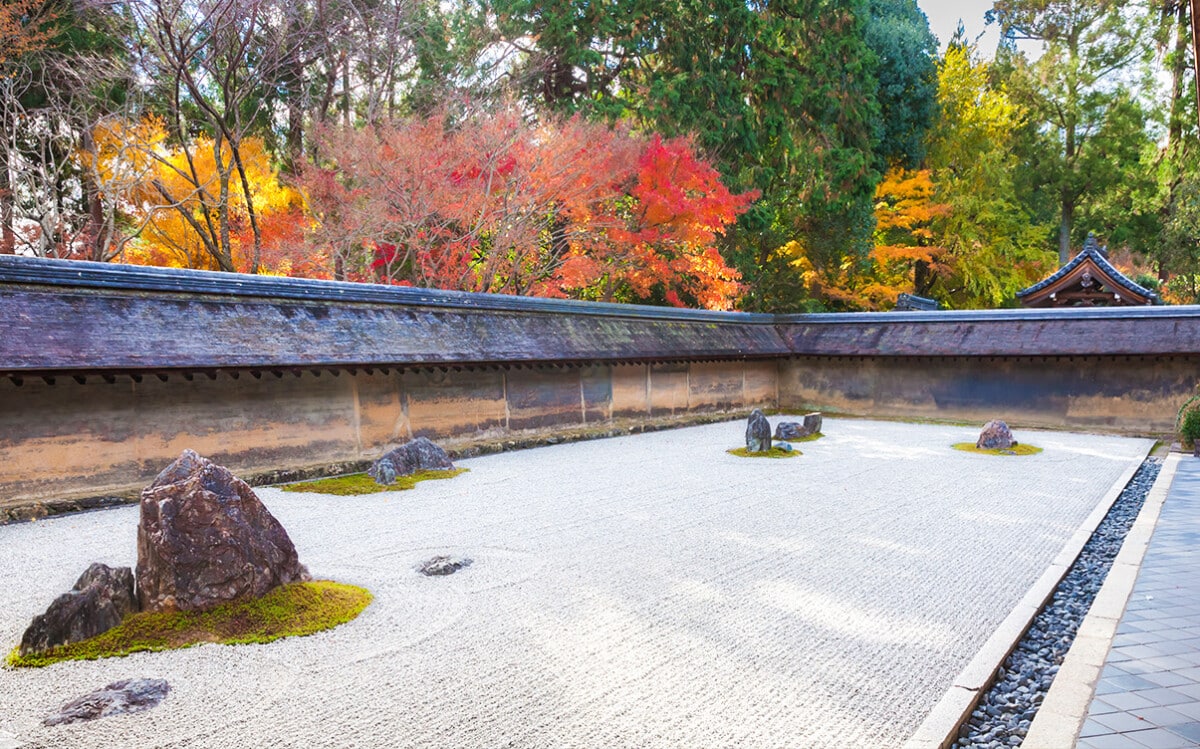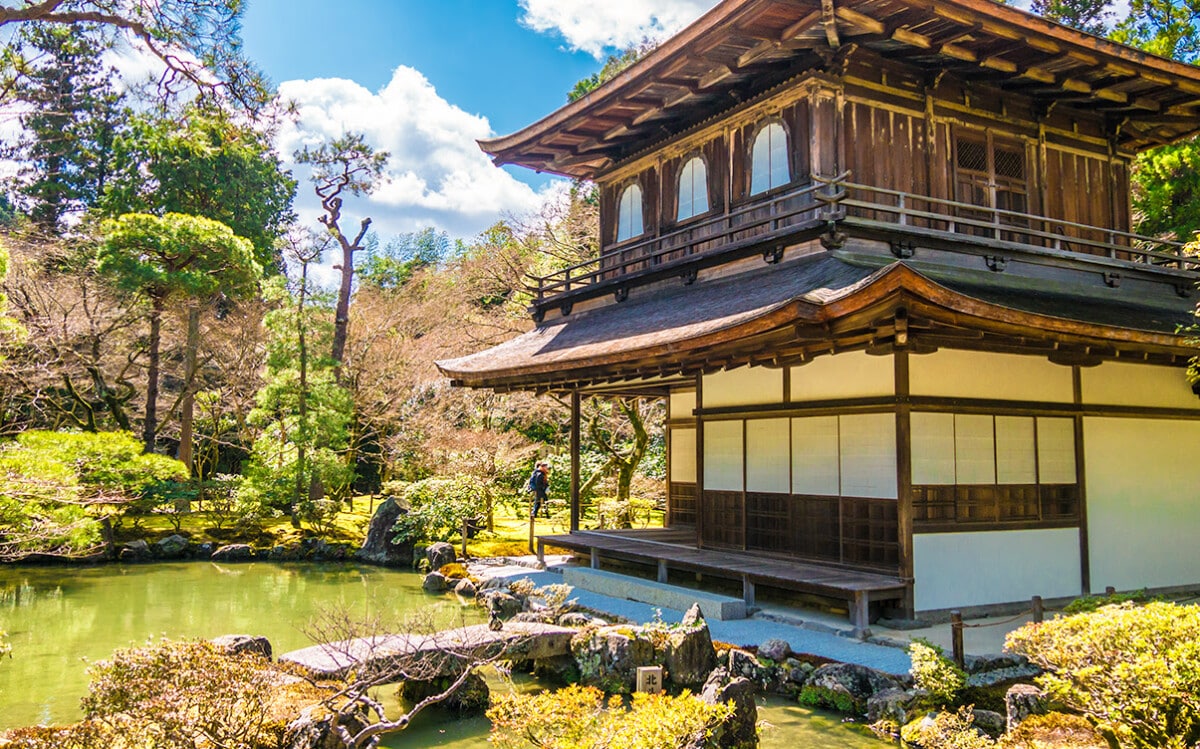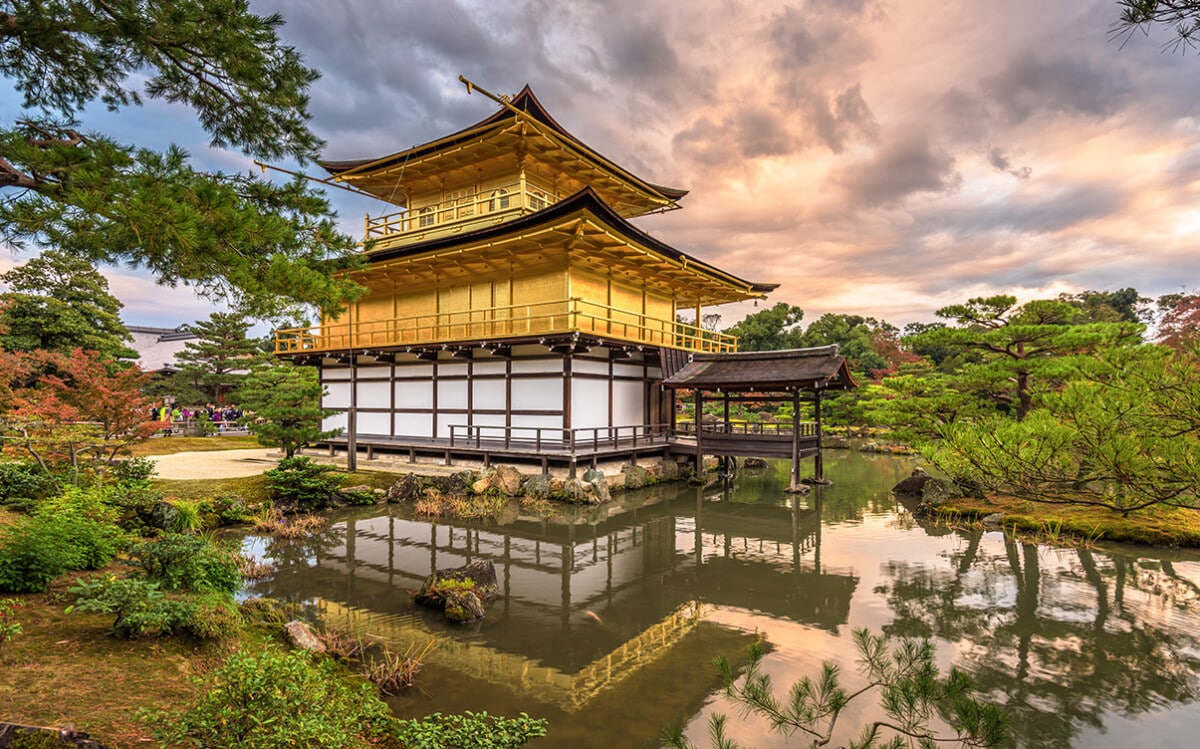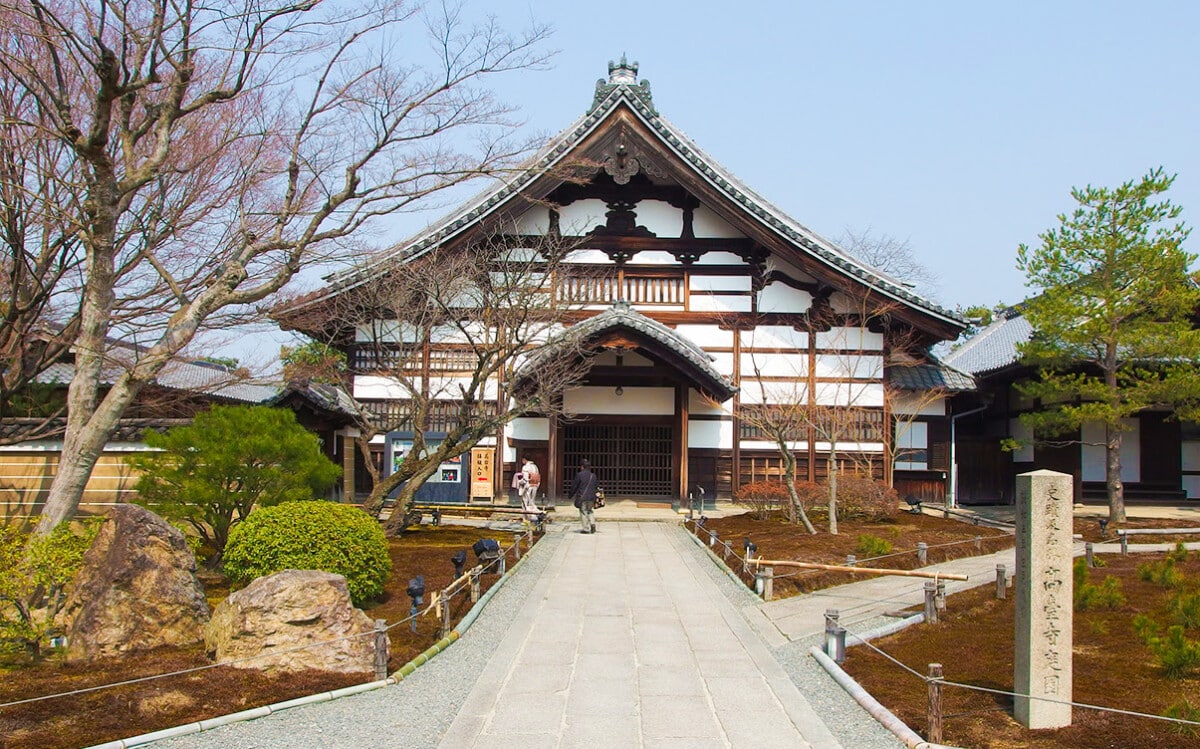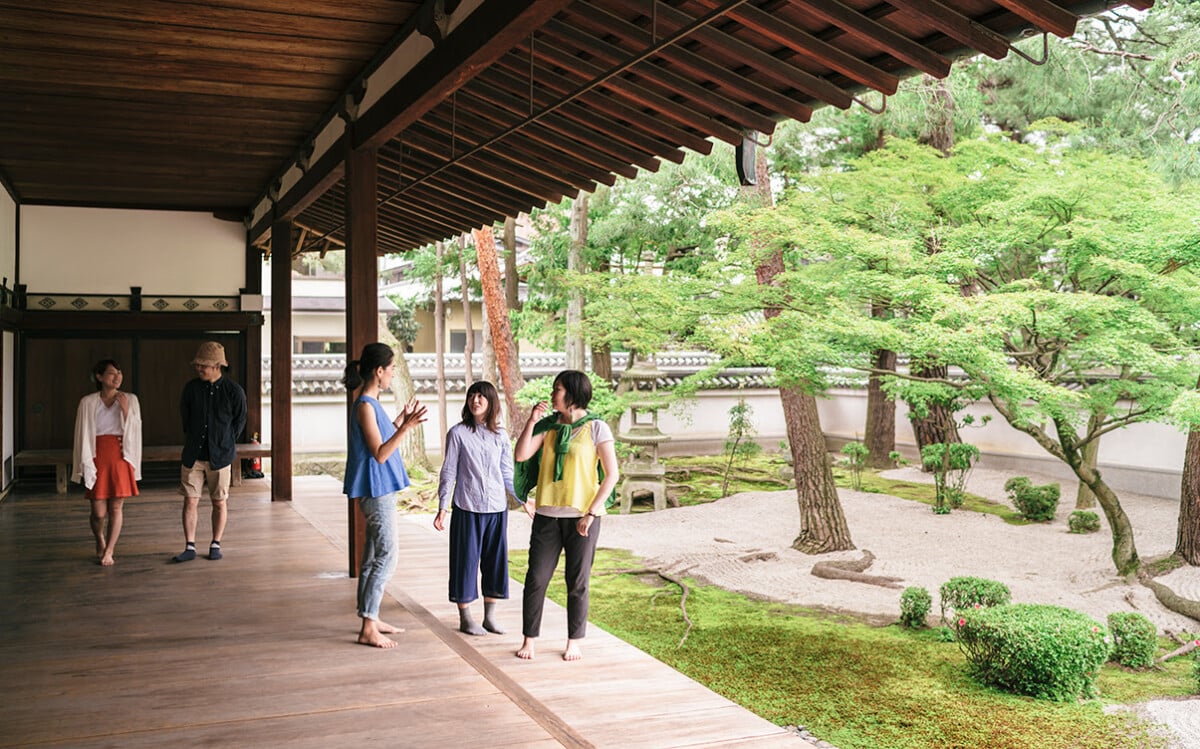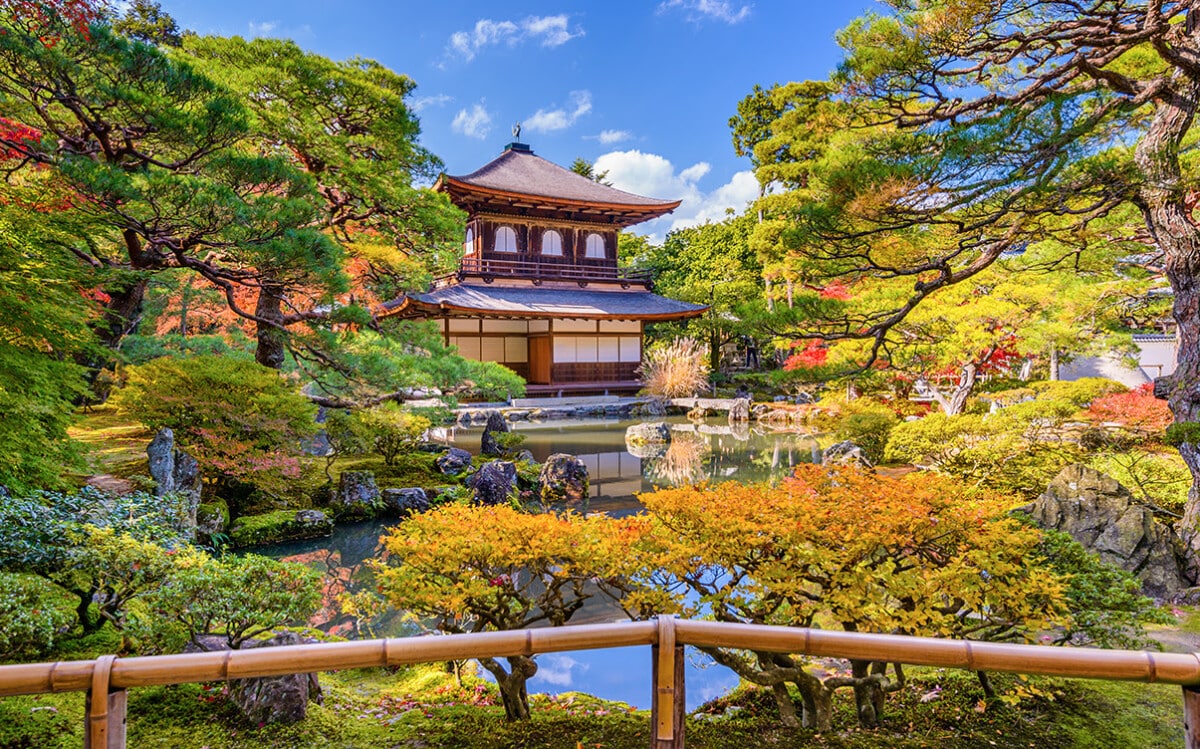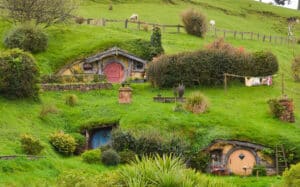6 of The Best Temple Gardens to Visit in Kyoto, Japan
Disclaimer: This post may contain affiliate links. Please see our Disclosure Policy and Advertiser Disclosure for details.
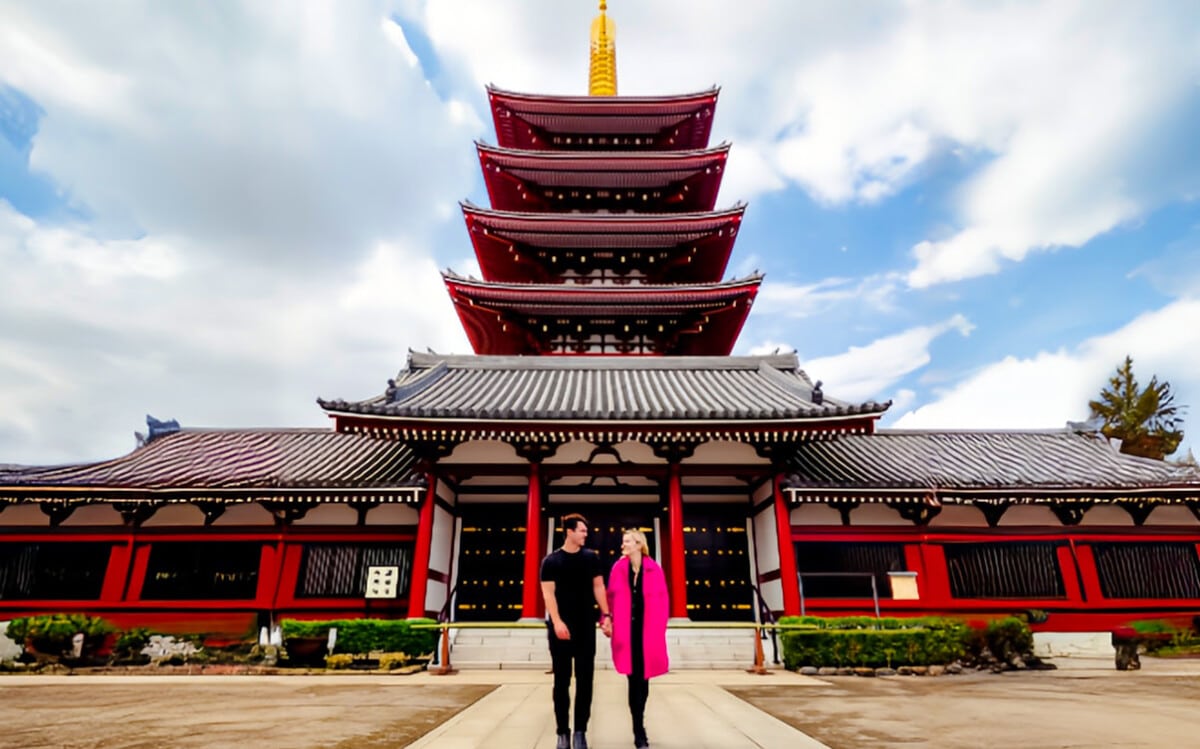
Kyoto is one of the best places in all of Japan to see temple gardens. Pretty much everything is represented somewhere in the city, from sprawling and decadent gardens hailing all the way back to shoguns and emperors, to austere “Zen” gardens of carefully-tended gravel, mossy rocks, and contemplation.
Really, it’s hard to narrow it down to just six. Kyoto has over 1,600 temples scattered throughout the prefecture, so there’s something for everyone, guaranteed. Some gardens are dense and bright enough that you feel miles away from civilization, while others encourage you to pause, take a moment, and reflect on life and the future.
We can pretty much guarantee, too, that while we’ve listed six excellent gardens you can visit, your favorite won’t be among them. Just exploring the city and visiting gardens as you find them means you’re sure to come across a star attraction we haven’t even seen but resonates with your soul in particular. And that’s fine! Our list is just a starting point and a “greatest hits” list of gardens you can visit to get a feel for what you can find throughout the area.
#1: Ryoan-ji Temple
Ryoan-ji temple hosts what is quite possibly the most famous temple garden in all of Japan. The temple was a villa in the Heian period and was converted into a Zen temple over 550 years ago. The temple garden is a very carefully-tended expanse of white pebbles surrounding islands of isolated rocks and moss. It is, in many ways, the archetypal Zen garden that inspired many other such gardens all over Japan and around the world.
Fun fact: No matter where you are around the garden observing it, at least one of the fifteen feature rocks is hidden from view. This gives you a means to reflect on both the visible and invisible in the world around you.
While the temple garden itself is relatively small and definitely not something you can stroll through, the rest of the temple and the surrounding area are gorgeous and full of art, culture, and history. It’s renowned as one of the most must-see destinations in Kyoto for good reason. It’s also a Unesco world heritage site and not the only one on this list.
#2: Ginkaku-ji Temple
Ginkaku-ji – which means “silver pavilion” – is another of the Kyoto bucket list items for temple-goers and tourists alike. It was originally constructed as a retirement villa for a shogun in 1482 and was converted into a Zen temple a few years later. At the time, it was a hub of contemporary culture. The silver pavilion itself – not actually silver, sadly – is the centerpiece of the temple complex. The surrounding area is all one large garden for strolling through, with a circular path that leads around the area and showcases different views and small gardens throughout.
Attractions in the area include the “sea of silver sand” garden that contains a huge sand cone called the moon viewing platform (though, of course, you can’t actually visit or climb it to view the moon.) A moss garden with ponds and small bridges leading to and from tiny islands is a more interactive attraction. And, in the back, a path winding up a hill gives you a gorgeous overview of the whole complex.
#3: Kennin-ji Temple
As the oldest Zen temple and Zen garden in Kyoto, Kennin-ji is ranked #3 of the five great temples in Kyoto. It’s over 200 years older than the other temples on this list, built in 1202, and has survived many disasters in the centuries since. It was founded by the monk who introduced Zen Buddhism to Japan in the first place!
The temple itself is a wonder to behold, with intricate paintings of dragons on the doors and a famous image of Fujin and Raijin on the folding screen. An incredible mural that seems right out of the same age adorns the ceiling of the Dharma hall, though that mural was painted as a celebration of the 800th anniversary of the temple.
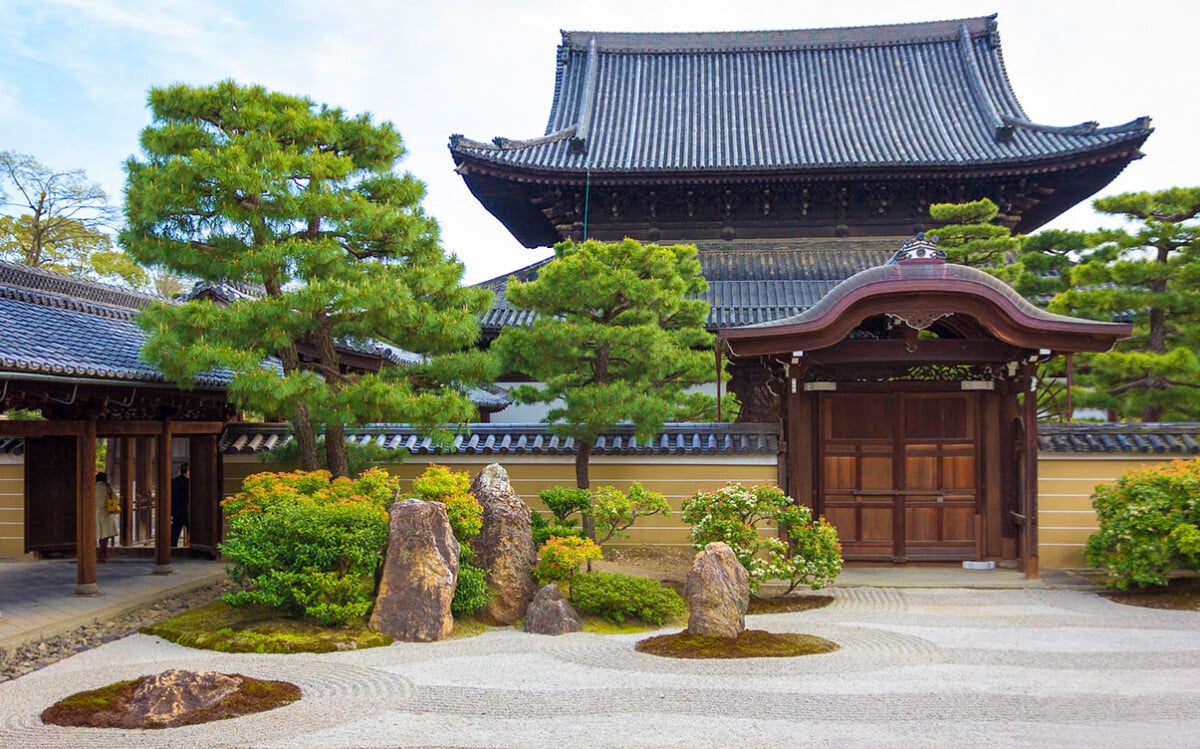
Image source: ©Christian Kaden on Flickr https://www.flickr.com/photos/satorinihon/8640057730
The contemplative Zen gardens here are larger but less intricate than the one in Ryoan-ji. The rest of the grounds are themselves a well-tended garden for strolling, meditation, and history.
#4: Saiho-Ji Temple
Saiho-ji is also known as Koke-Dera, the moss temple, and it lives up to the name. Where we in America see lawns of tended grass, this temple is coated with ancient and well-tended moss. It’s a large garden intended for strolling in a path that circles the golden pond, and hosts several tea houses where you can sit and absorb the ambiance, reflect on life, and enjoy the surroundings.
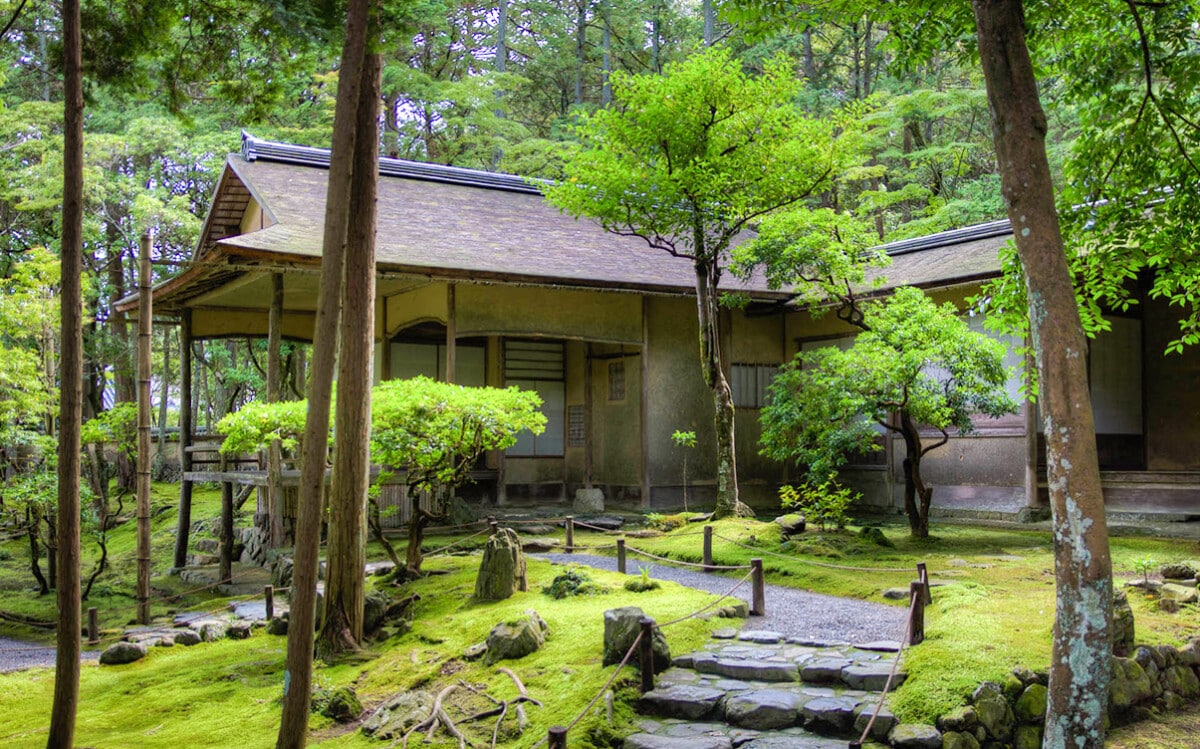
Image source: ©Christian Kaden on Flickr https://www.flickr.com/photos/satorinihon/8015456881
As a Unesco world heritage site, the moss temple is an incredibly important place for the history and culture of Kyoto, and as such, it needs to be protected. As a result, it’s somewhat hard to visit; you need to sign up for an advance reservation, and admission is more expensive than many of the other temples. Fortunately, you can make your reservation online, and their website has an official English reservation system. Be aware, though, that you need to register well in advance, and spaces are limited, so you should plan around this one.
#5: Rokuon-ji Temple
Another of the most famous temples in Kyoto, this one is simply stunning.
So, remember how Ginkaku-ji is called the Silver Pavilion despite not being coated in silver? Well, the origin of that name is likely a reflection of Rokuon-ji, which is also known as Kinkaku-ji, the golden pavilion. And, unlike Ginkaku, Kinkaku is actually coated in gold. The top two floors of the pavilion (excluding the roofs, which keep the rest of it from being marred by the weather) are covered in gold leaf. On a sunny day, it’s simply brilliant and shows you just why gold is such a sought-after metal.
The overall temple garden has many features, from the Hojo (head priest’s residence) with its Zen garden to the temple’s tea house and tea garden to the gorgeous trees, statues, and other decorations scattered around the grounds.
Really, though, it has a building almost completely covered in gold. What else could you want out of a temple?
#6: Koda-ji Temple
Officially known as Jubuzan Koda-ji, this temple was first established in 1606 and contains art and antiques left over from that time. The temple garden here is one of the most interesting Zen gardens in all of Kyoto! It’s not one simple flat expanse; rather, it has raises and dips, cones of gravel, and ripples in the sand, all of which give you something interesting to meditate upon no matter where you look.
Koda-ji isn’t just one of our favorites, either. It’s a nationally designated historic site and an official “Place of Scenic Beauty,” so you know it has to be good.
Tips for Visiting Temple Gardens in Kyoto, Japan
Kyoto may be one of the smaller cities in Japan, but it’s still a city, which is a pretty large place to explore. How can you make sure you get the most out of your trip?
Get a sightseeing pass. The sightseeing pass is a travel card you can purchase for 1,400 yen, about $9 at today’s exchange rate. It grants you one day of free access to the city’s subway and bus system, so you have free run of the public transit while you explore. You might need to buy this for a few days in a row to make the most of a Kyoto trip, but it’s well worth it.
Alternatively, you can rent a bike to cycle through the city. If you like to explore the sites in between the sights, a bike is a great way to do it. You won’t get around quite as fast, though. Our recommendation is to plan ahead, pick the further-out temples to visit via transit, and rent a bike to head back in and explore the local area around your hotel.
Don’t haul your luggage yourself. You’ve probably seen videos of trains in Japan being packed to the brim; how do you think you’ll fare if you need to haul a suitcase or two on there with you? Even the more luxurious trains don’t have much space for more than a small carry-on. So, what’s a world traveler to do?
Japan has a service called takkyubin, which is a luggage delivery service. You contract them to deliver your luggage somewhere, like from the airport to your hotel, and you’re pretty much good to go. It costs around $20 (depending on the service, location, distance, etc.) and is well worth the cost.
Don’t pack like you’re backcountry camping. Remember, Kyoto is a modern city with modern amenities. Anything you could want, you can buy. Bring your necessities, but don’t sweat the small stuff. The only things you might find harder to obtain are large-sized clothing and shoes, prescription medications, and a few of the uniquely American kinds of snacks. Even then, it just means you might need to look harder to pick up a spare, not that it’s completely unavailable.
Pick a local hotel chain. International hotel chains have name recognition, but local hotel chains are likely less expensive, and you can get a nicer room for the same price as a basic room at the international luxury brands. Of course, you can also try out one of those pod hotels for a night if you like, but if you’re staying for any length of time, get something with a bit of luxury.
Plan ahead. Kyoto is a very popular destination – second only to Tokyo, really – so there are a ton of different things to see and do. Lists like this one only scratch the surface. It’s a great idea to do some research, look into itineraries, and plan at least some major things to do every day while you’re there. If you just want to wander, get lost, and see the sights, that’s fine, but you’re inevitably going to leave feeling like you missed something. Of course, people can spend lifetimes in Kyoto and not see everything there is to see, so that’s to be expected.
Learn a bit of Japanese before you visit. You don’t need to learn Japanese to visit Kyoto, or Tokyo for that matter. There’s a lot of English infrastructure and signage, and even public transportation often has announcements in both Japanese and English to help tourists get around. Knowing some common words and phrases can help immensely with navigation and socialization, however, so it’s not a bad idea to pick a bit of the language up before you go.
Now, if you plan to visit more rural areas further from the major cities, that’s when you’ll find less support for English and fewer people who know enough English to help you out.
When is the Best Time to Visit the Temple Gardens in Kyoto?
Kyoto weather can be very hot and humid during the peak of summer and bitterly cold during the depths of winter. That means spring and fall are the best times to visit. For more green and fresh air, spring is where it’s at; for autumn colors and a shift to cooler weather, fall is a great idea.
As for the best time of the week or time of the day, it can vary by temple. Many of the most popular temples are absolutely packed during the day (unless they’re like Saiho-ji and have a daily limit on admissions) so picking a time right after they open or soon before they close for the day is ideal. Mondays seem to be better, but even that can be seasonal. Just don’t expect to have a temple garden all to yourself, is what it comes down to.
Whatever the case, visiting Kyoto is always a great time, as long as you come prepared and you’re not afraid of crowds. It’s a gorgeous, historic, and incredible place to visit, and frankly, everyone should visit there at least once in their lives.
You may also enjoy:

